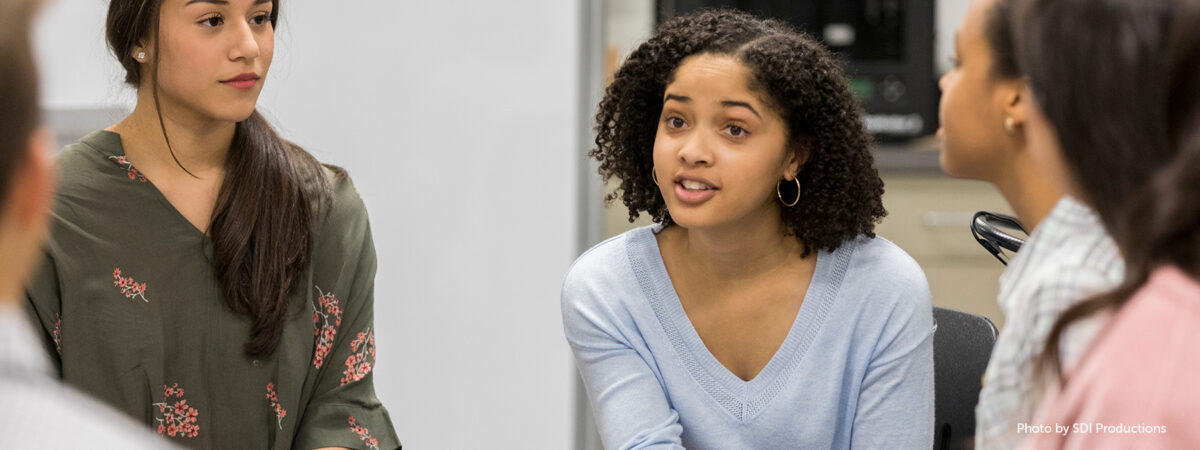
Creating a learning environment with these questions in mind invites us to open the door to necessary conflict. Why conflict? Traditional approaches to creating learning experiences do not highlight students’ identities, interests, or perspectives, nor do they equip us as educators to effectively incorporate these valuable aspects of students’ knowledge into our teaching. Conflict and the challenging conversations that come with it push the boundaries of our collective knowledge and make space for creative newness to emerge.
I work as an intersectional racial equity consultant focused on systems transformation with K-12 schools and colleges across the country. Currently, I am supporting educators and coaches in “Community Socratic Circles to Build Teacher Capacity for Culturally Responsive Teaching,” a project of the Center for Inclusive Innovation. In this community of educators, we work to create a learning space where students can fully be themselves and collaborate with educators to enhance engagement and broaden learning opportunities.
Socratic Circles, student-led and centered discussions focused on a text or essential questions, are particularly suited for this purpose. This instructional method invites students to bring their whole selves to the table, pairing academic rigor with critical discourse. Through Socratic Circles, students engage in deep, provocative discussions that challenge and expand their perspectives. This approach—combining reading and writing with meaningful student-led dialogue—supports literacy development and equitable access to rigorous engagement by allowing students to connect personally with the material.

Read how Reynoldsburg City Schools (OH) utilized the Inclusive Innovation model to introduce an innovative Open Educational Resource, Socratic Circles, designed to assist teachers in guiding discussions on racial and social justice in the classroom.
For those on a journey toward liberatory pedagogy, the path to creating authentic engagement with students starts with us. As educators, we must model the practices we wish to see: prioritizing rest, creating joy, being open, and engaging fully in the process of learning. By positioning ourselves as fellow travelers on this journey, we amplify opportunities for connection and learning that go beyond the traditional classroom.
Want to learn more about the Socratic Circles scale-up project? Read this blog from an instructional coach in the program.